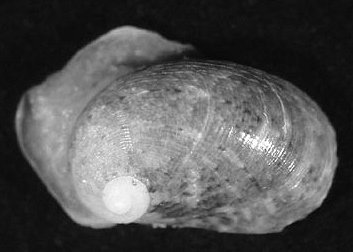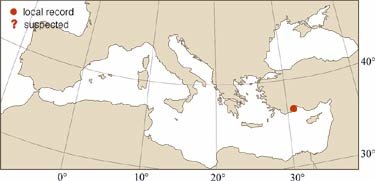
|
Relevant Synonyms
Misidentification
|
|
| photo: K. Schniebs / Coll. F. Höhler |
|
SHORT
DESCRIPTION
color :
extremely variable, various tones of brown, green, pink, forming a variegated pattern more or less organized into spiral bands where a particular tone dominates. Inside of aperture nacreous.
common size :
5.3 mm (the Mediterranean specimen), 12 mm in the Red Sea (Bosch et al., 1995), up to 25 mm in the Indo-Pacific. |
DISTINGUISHING CHARACTERISTICS
BIOLOGY / ECOLOGY
habitat :
the Mediterranean specimen was found on a shell of Patella, but presumably inhabits the rocky substrate in general. |
|
1st
Mediterranean record
|

|
|
DISTRIBUTION
|
ESTABLISHMENT SUCCESS
speculated reasons for success :
|
|
|
MODE OF
INTRODUCTION |
IMPORTANCE TO
HUMANS |
|
KEY
REFERENCES
|
|
|
 Gena varia Adams A., 1850
Gena varia Adams A., 1850